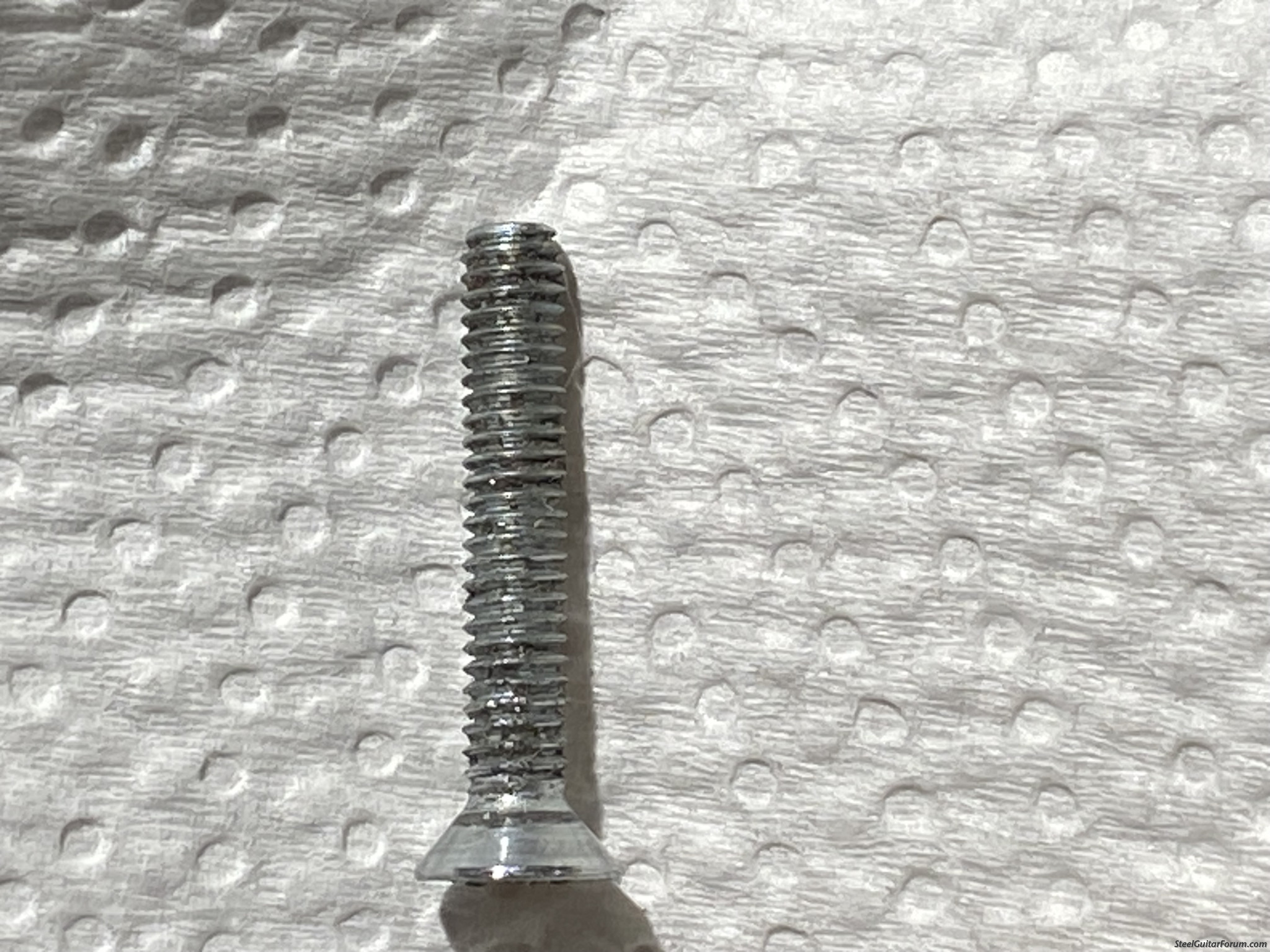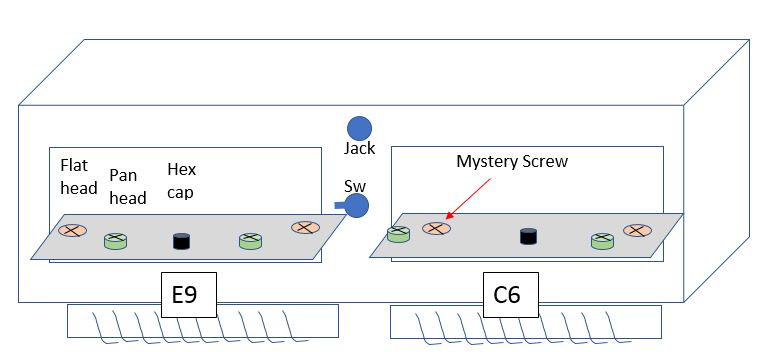Did you ever get an answer?
If not – Here you go: The “Mystery Screw” threads into the bottom of a cross bar that spans the changer mounting assembly.
Changr w cross bar.JPG
Changr mounted.JPG
On my guitar, the "Mystery" screw is a round head 8-32 machine screw with a washer. It measures 1” long for the C6 changer. For E9, the same screw measures 1 1/8” long. For your guitar it looks like the mystery screw is counter sunk. The screw circled in RED is the "Mystery Screw". The screw circled in GREEN mounts the end plate to the guitar body
Mystery Screw C6.JPG
My guitar is #082. I suspect your guitar is a higher serial # and may have some changes / improvements. For example, my guitar does not have the allen head socket screw that I see in the photos of your guitar. Also – the panhead screws (GREEN) that are next to the “Mystery Screws” (RED) attach the end plate to the guitar body.
Mystery Screw removed.JPG
So, you do have a 747 flying on 3 engines. I don’t know what was in Sr’s head when he switched from the “cut tail” necks to the “wrap around” style. There has been a lot of discussion about how necks attach to the body and any acoustic interaction between the necks, changers, and the guitar body. From the perspective of “resonance”, I suspect Paul Sr had something in mind when he added the cross bar to the changer support and then added the 8-32 screws through the body from below. You will have to decide if it is worth disassembling your guitar to fix it.
Know this: If you decide to repair this, you will have to remove the neck to get at the changer. To remove the neck, you will have to remove the fret boards to access 6 screws (PURPLE) that hold the neck in place from the top. It’s not as challenging as you might think and there is a way to remove the fret boards without damaging them.
Remove frets.JPG
If you decide to do it, once removed you will have an ideal opportunity to clean the changer fingers. #082 is the second Franklin I’ve disassembled. It was necessary to disassemble both because the changer fingers had become very stiff from years of improper cleaning and lubricating. Once cleaned, the guitar was much easier to properly/accurately tune.
Let me know if you would like more detailed info. I have a lot more disassembly photos and can share some important details like different length screws for the C6 vs E9 necks.
You do not have the required permissions to view the files attached to this post.






